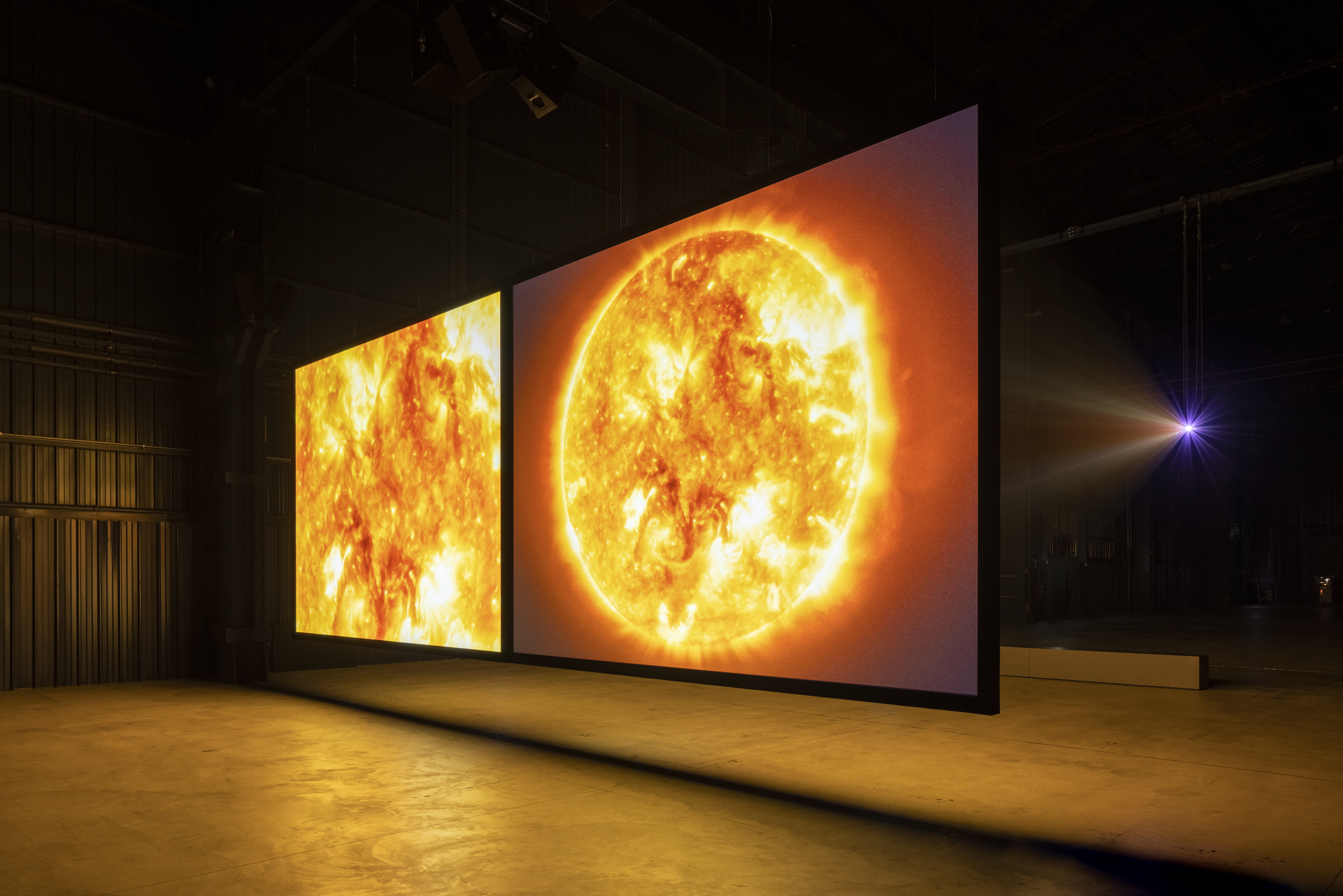SUNSHINE STATE | STEVE MCQUEEN
In front of us, in the darkness of space, two suns stand out. One approaches us fearfully, the other moves away only to meet in a median equilibrium. “Sunshine State” repeats the voice of artist Steve McQueen, “Sunshine State, Sunshine State”. We are already out of air. Then the movement of the two suns resumes, continues, always moving in the opposite direction, the voice is telling us how the artist’s father was the victim of a violent racist attack. McQueen focuses on the details of this story told by the father on his deathbed and above all highlights how much was important for him to learn about this dramatic episode for him.
Sunshine State (2022) opens with this confession and as Steve McQueen continues his narrative, the two suns disappear and in the two-channel projection appear two versions of The Jazz Singer, a 1927 film directed by Alan Crosland and gone down in history for having started sound cinema. The video installation consists of two channels in which Crosland’s film is shown in its original and negative. The two videos are seen on a projection suspended inside the huge space of the hangar. The artist, taking up the original film, manipulates it not only by inverting the tones but also the time: on one side the film continues traditionally and the second version is presented in the other channel, proceeding in reverse. Sunshine State becomes an archival work that plays precisely on the limits of artistic intervention, proposing a reflection on the social contexts of that time but that are crucial in our present.
Jakie, the protagonist of The Jazz Singer (1927), is a Jewish boy who pretends to be black in order to do what he really wants: perform and sing jazz music in some Florida theaters, precisely the state of the sun. In one of the most iconic scenes, Jakie turns black on his skin before performing, inside the video his double, instead, seems to wear white. Steve McQueen, demonstrating once again his ability to use filmic methods in an unconventional way, manages to talk about minorities and problems related to the identity and culture of each individual.
“Wait a minute, wait a minute. You ain’t heard nothin ‘yet!“: these are the words that the sound engineer accidentally pronounces at the beginning of the original version of The Jazz Singer, but somehow they could also fit the revisitation made by Steve McQueen: Sunshine State seems to be just the beginning of a speech, an introduction on the human and social condition of Florida during the 20s of the twentieth century that suggests, however, its perpetuation over the decades. Above all the video underlines the concealment of violent act of racism, traceable in the story of the artist’s father who still echoes in our heads as we watch the smiles of the actors. Sunshine State … Sunshine State. Florida, defined as the state where the sun always shines and people are always happy, assumes a new meaning: the sun that should warm and lighten us is now a sun that burns and takes our breath away.
Sunshine State is the unpublished work presented at Pirelli HangarBicocca and which also gives the name to the exhibition dedicated to Steve McQueen practice. The echibition, inaugurated on March 31 will be open until July 31 2022. The video was born as a commission of the International Film Festival Rotterdam (IFFR) and is presented for the first time in the spaces of the institution in Milan inside a retrospective exhibition that includes some of the most important works of the artist’s career.
Steve McQueen
Sunshine State, 2022
Installation view at Pirelli HangarBicocca, Milan, 2022
A Commission for International Film Festival Rotterdam (IFFR) 2022 © Steve McQueen. Courtesy the artist, Thomas Dane Gallery, Marian Goodman Gallery and Pirelli HangarBicocca, Milan
Photo Agostino Osio
11/05/2022

